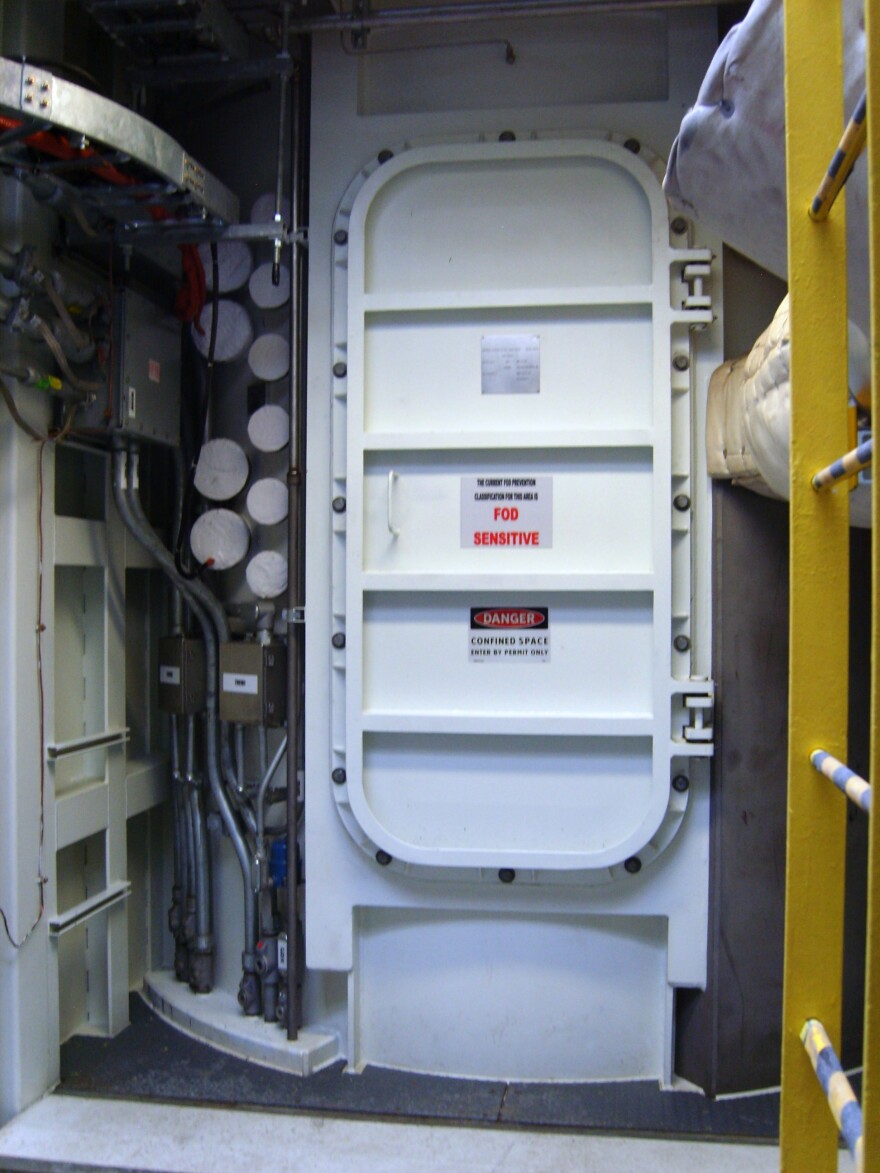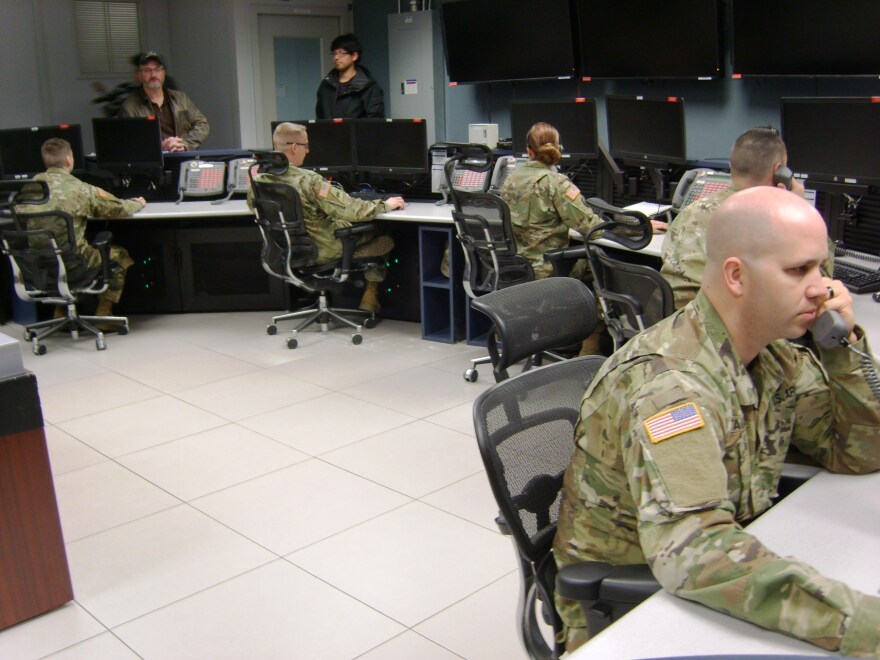Despite the apparent easing of tensions on the Korean Peninsula, soldiers operating the missile-defense base at Fort Greely and elsewhere remain ready to respond to an attack by North Korea or other hostile regimes against the United States. U.S. military officials told reporters on a rare tour of the high-security facility at Greely last week that is the hub of the nation’s defense against missile attack that remains operational 24/7.
On Thursday, the same day that leaders of North and South Korea met for the first time to talk about peace, Alaska Army National Guard soldiers operating the missile-defense base at Fort Greely continued ongoing training to respond to a missile attack.
“Director: threat to Los Angeles – engaged,” says Staff Sgt. Justin Taylor, a weapons officer with Echo Company, 49th Missile Defense Battalion, while rehearsing a typical training scenario conducted Thursday for media invited to tour the base.
“MDO – threats to Los Angeles has been engaged with two GBIs, one out of Vandenberg, and one out of Fort Greely,” says Maj. Terri Homestead, the crew’s director, simulating how she’d inform the missile defense officer at the U.S. Northern Command that two GBIs, or ground-based interceptor missiles, have been launched from Greely and Vandenberg Air Force Base in California at the incoming threat.
The ground-based interceptors or GBIs knocked down the incoming missile in the training scenario conducted in the base’s Fire Direction Center, and Los Angeles was saved. In reality, the Ground-based Midcourse Defense, or GMD, system has had mixed success in intercepting missiles in tests conducted since it went operational in 2004.

But Col. Kevin Kick, commander of the Colorado-based 100th Missile Defense Brigade – the 49th Missile Battalion's next higher-level command – says a successful test last year has bolstered confidence in the GMD system.
“That really was a significant milestone for the system, where we were doing the actual wartime mission under test conditions,” he said.
But that testing doesn’t involve interceptor-missile launches from Greely. They’re launched from Vandenberg Air Force Base in California. Kick says that’s because Vandenberg is set up for those tests, “whereas Fort Greely is totally configured as an operational site.”
Mark Wright, a Missile Defense Agency spokesman, adds: “If a missile flies from here, it’s to protect the United States of America – the Lower 48 plus Alaska and Hawaii.”
Wright says the sequence of events that would lead up to and follow a Greely missile launch would unfold quickly once the military’s global array of sensors detected a missile headed toward the United States.

“That’s why we have those folks on watch 24 hours a day, seven days a week, 365 days a year – because they need to be,” he said. “Because, if things go wrong, it’s going to go wrong very fast. And we have to be able to react very fast, to meet that.”
Wright says there’s not a minute to spare to get the interceptor launched and into position at a point hundreds of miles above the Earth where it would slam its warhead, the so-called “kill vehicle,” into the enemy missile that’s hurtling along at nearly 7 miles a second – a speed that’ll bring it to its target thousands of miles away in less than an hour.
“We’ve got to get a missile from here, from Fort Greely, up into the sky, out of the atmosphere into space, with enough power to do that. And then close on that target traveling 10, 15,000 miles an hour,” he said.
The silos that house the 40 interceptors based at Greely are heavily armored to protect them from the powerful forces unleashed when the interceptors’ engines are fired, says Maj. Pete Browning. He’s a senior tactical director with the 49th Missile Battalion, the Alaska Army National Guard unit that operates the Greely missile base.

“The pressures and also the heat generated from the fuel being burned will create immense pressure, and (we) have to have quite a bit to protect everything on the other side,” Browning said.
On the other side of a massive steel blast door, that is, which separates the silo from a underground vault that workers use to check and maintain the interceptors. Browning says the vault shown during last week’s media tour is the oldest on the base.
“This is the first operationally emplaced ground-based interceptor at Fort Greely, operational as of October of 2004,” he said.
It’s one of six silos in Missile Field 1, one of the base’s three missile fields. Work is scheduled to begin soon on a $2.1 billion project to build a fourth missile field that’ll bring the number of interceptors at Greely to 60 within five years.



